Etzel Museum
Plan Your Visit
- Location: Etzel House: 2 Goldman Street in Charles Clore Park. Jabotinsky House: 38 King George St, Tel Aviv-Jaffa. On Waze “Etzel Museum” will offer you the choice of both locations.
- Open Times: Sunday to Thursday 08:00-16:00 Visits must be arranged in advance via the museum website.
- Prices: Pay 20 ILS for adults, and 15 ILS for children (5-18yrs) and seniors for each of the museum sites. Pro Tip: Entrance to the museum is free on Independence Day.
- Average Visit Duration: 1-2 hours.
- Popular Times: Visit Etzel House towards the end of the day and hang around to see the sunset over the sea.
- Special Events: Independence Day
- Relevant Tours: Private Tel Aviv tours can take you there, upon request. The museum offers of its own, and if you’re interested in how the small but strong nation of Israel was established and the heroes behind the fight for Israel’s independence then put the Etzel Museum on your itinerary! The museum has two locations, both cover aspects of the Etzel organization, and both are worth visiting.
Etzel is an acronym for “Irgun Tzvai Leumi” in Hebrew or National Military Organization. Etzel was an underground paramilitary Zionist resistance organization that was active up until the establishment of the State of Israel in 1948. They are often called simply “Irgun” or “organization”.
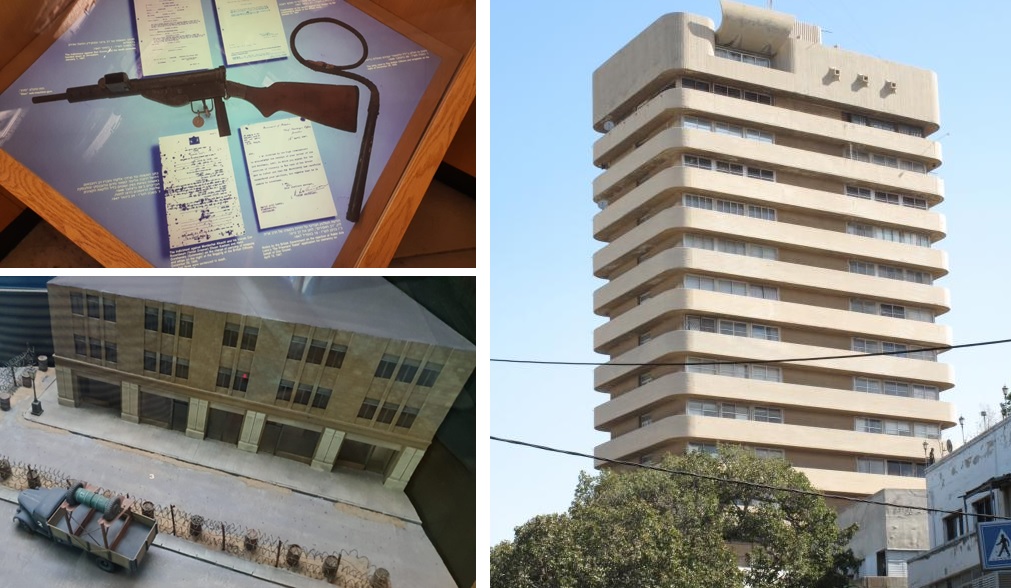 The Jabotinsky House. home of the Etzel Museum (Image source: Zeem Zamir CC BY 2.5, and exhibits from the museum)
The Jabotinsky House. home of the Etzel Museum (Image source: Zeem Zamir CC BY 2.5, and exhibits from the museum)
The group fought both the British in Israel for independence, and the local Arabs for their right to exist in Eretz Israel. So this is a history museum with a specific focus, one which will surprise you and give you a better understanding of the struggle and experiences of early Israelis.
The Etzel Museum is one of the best military history museums in Israel; it was designed to bring the subject matter to life with recreated scenes, historic photographs, sound effects, and original recordings from that period. There are authentic artifacts, information boards, and short video clips. By the time you leave the Etzel Museum, you’ll have a clear picture of this historical period.
What Was Etzel?
Step back in time and imagine a period in history when there is no Jewish state, antisemitism is growing in Europe, and a new leader has just risen to power in Germany who intends to wipe out the Jewish People. The only hope for survival of the Jews is a country of their own, and the dream is to establish it in the Jewish ancestral homeland, Eretz Israel.
The only problem was that the British had a mandate to rule Palestine and so any Jews wanting to settle in Israel had to do so as illegal immigrants. Young Jews arrived in Palestine with a dream of Jewish independence but they had to fight for it, and they did so by creating several resistance organizations. Etzel was one of those organizations, established in 1931 and determined to protect Jewish settlers in Israel from Arab attacks and fight to eliminate the British Mandate rule to pave the way to Israel’s independence.
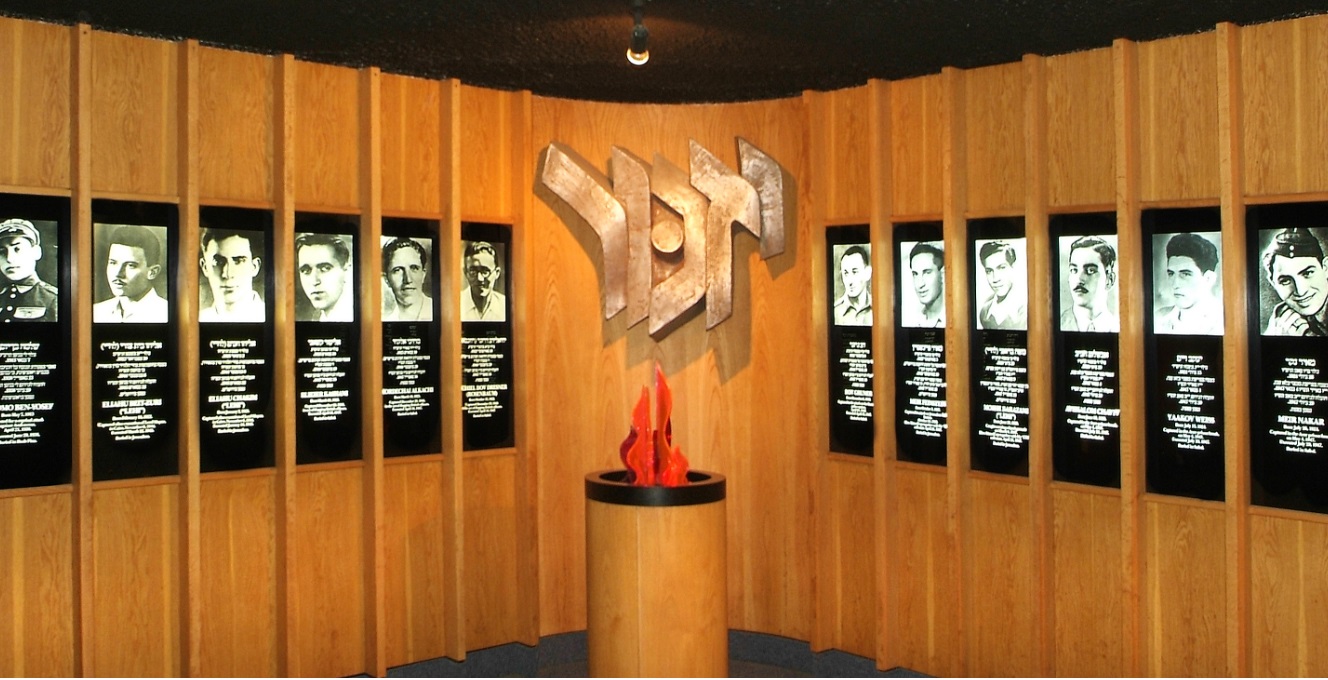 Fallen heroes of the Etzel (Image source: The official Jabotinsky House website)
Fallen heroes of the Etzel (Image source: The official Jabotinsky House website)
The organization existed for 17 years, during which time they carried out many dangerous missions. When Israel was established in 1948, Etzel members were integrated into the Israeli Defense Force. This period was when Etzel came out of the shadows and instead of running underground operations, transitioned into open military operations.
When the country was attacked simultaneously by Syria, Lebanon, and Egypt, Etzel members fought side by side with other Jewish fighters. Etzel fighters were involved in one of the most decisive battles of the War of Independence, the liberation of Jaffa from Arab hands.
The Two Locations of the Etzel Museum
The Etzel Museum has two locations, the Etzel House on the edge of the sea near Jaffa, covers mainly the liberation of Jaffa while the branch of the museum in Jabotinsky House covers the organization, its history, operations, and leaders.
Etzel House (or Beit Gidi)
Location: On the seashore, in Charles Clore Park just before you enter Jaffa.
This campus of the Etzel Museum is appropriately located near the entrance to Jaffa, as the exhibits cover mainly the campaign to liberate Jaffa during the War of Independence in 1948. Visitors follow a winding path through chronologically arranged exhibits starting in 1947 with the decision by the United Nations to propose a partition plan dividing Palestine between the Jews and the Arabs.
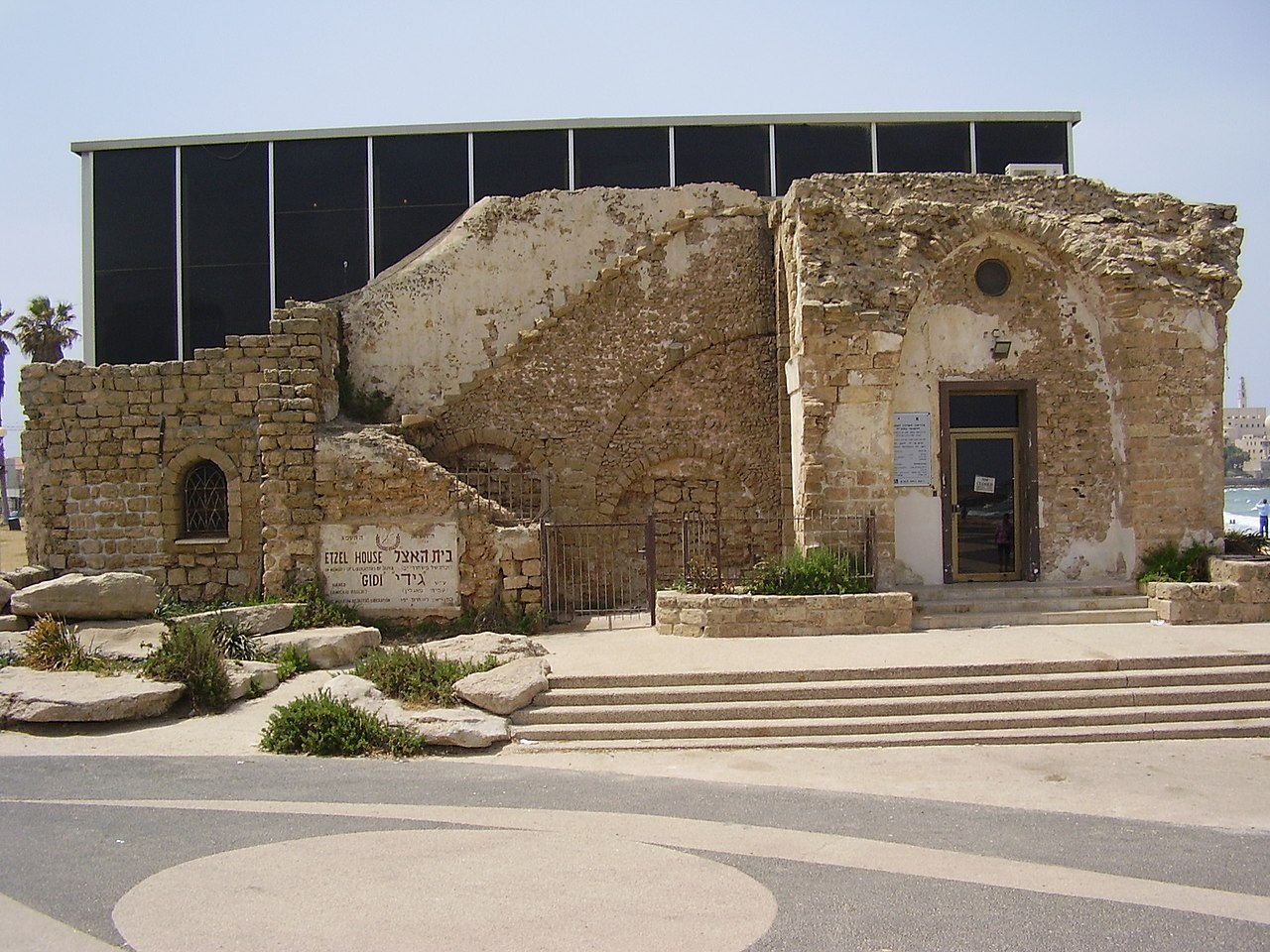 Etzel House, Beit Gidi
Etzel House, Beit Gidi
There are maps showing the country’s boundaries at the time and the proposed partition plan borders. Exhibits highlight the various battles and the training that Etzel fighters undertook. The main part of the museum is dedicated to the battle for Jaffa. There is an audio-visual recreation of the battle, maps, weapons, and photographs from the fight to liberate Jaffa, one of the most decisive and important battles of the War of Independence.
Other sections tell the story of the shofar that was confiscated by a British policeman and eventually made its way back to Jewish hands.
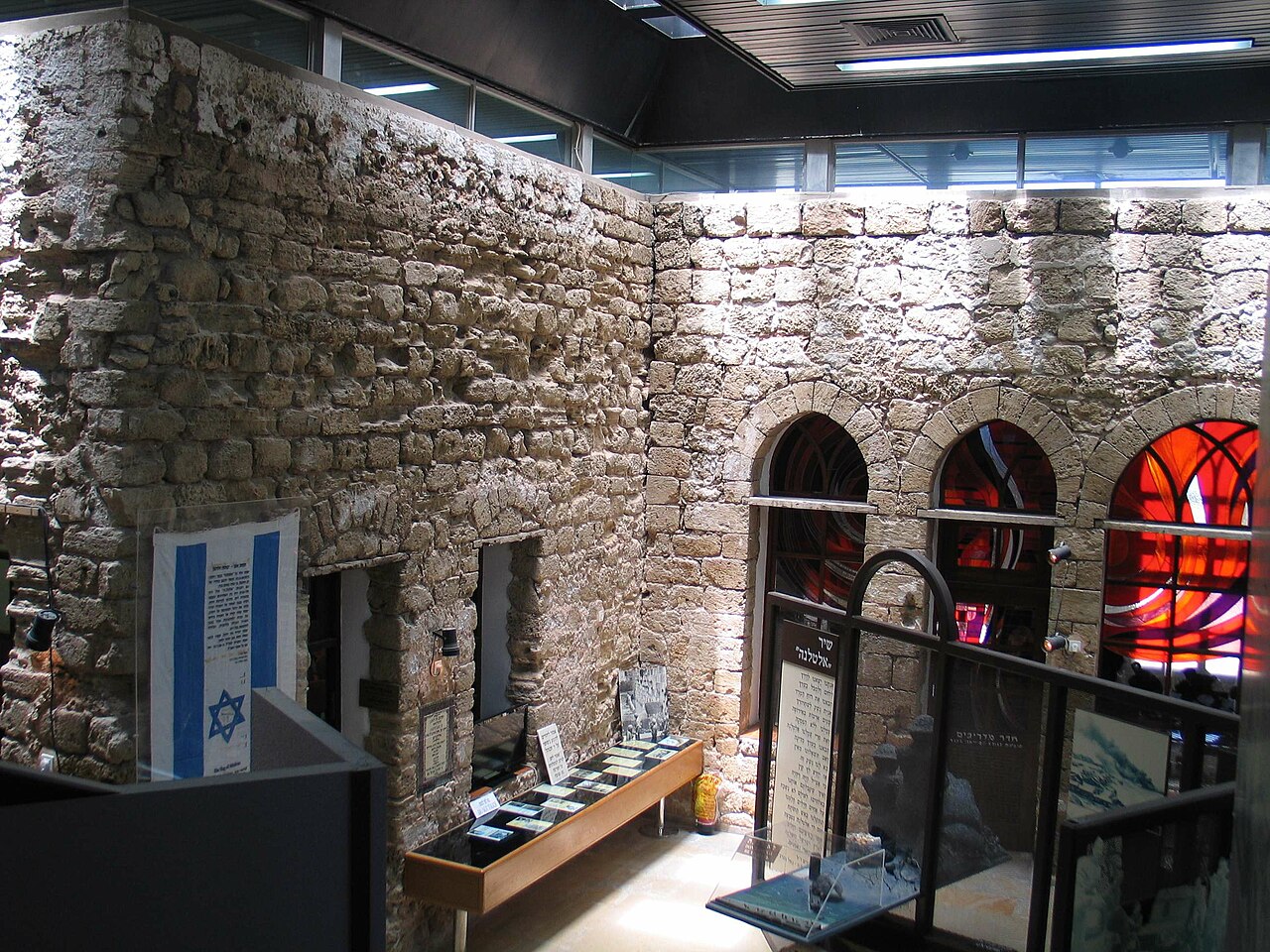 Inside the Etzel House (Image source: Bukvoed CC BY 3.0)
Inside the Etzel House (Image source: Bukvoed CC BY 3.0)
Also, the Battle of the Jordan Guard is illustrated, showing how Jewish fighters stopped the advance of Syrian forces. But when ammunition ran out, the Jews were forced to surrender, some losing their lives and others wounded or taken into captivity.
Finally, visitors can learn about Altalana, a weapons ship that departed from France and made its way to the shores of Israel, only to sink off the coast of Tel Aviv.
Etzel House - The Building
You can’t miss this unusual building standing on a grassy slope along the seaside promenade. The striking building is a glass rectangle built above the ruins of a Jewish home built in 1900 at a time when Palestine was ruled by the Turkish Ottomans. It was once part of the Menashiya neighborhood that was destroyed in the War of Independence of 1948. Etzel House is also known as Beit Gidi (Gidi House) in honor of one of Etzel’s leading officers, Amichai Paglin, codename Gidi, and 41 other Etzel fighters who fell in the battle of Jaffa in 1948.
Jabotinsky House
Location: 38 King George Street, Tel Aviv.
This museum is dedicated to Etzel’s commanders, fighters, and their actions. On display are authentic documents, photographs, press clippings, weapons, models, and films all related to Etzel’s activities in the 17 years of the organization’s existence.
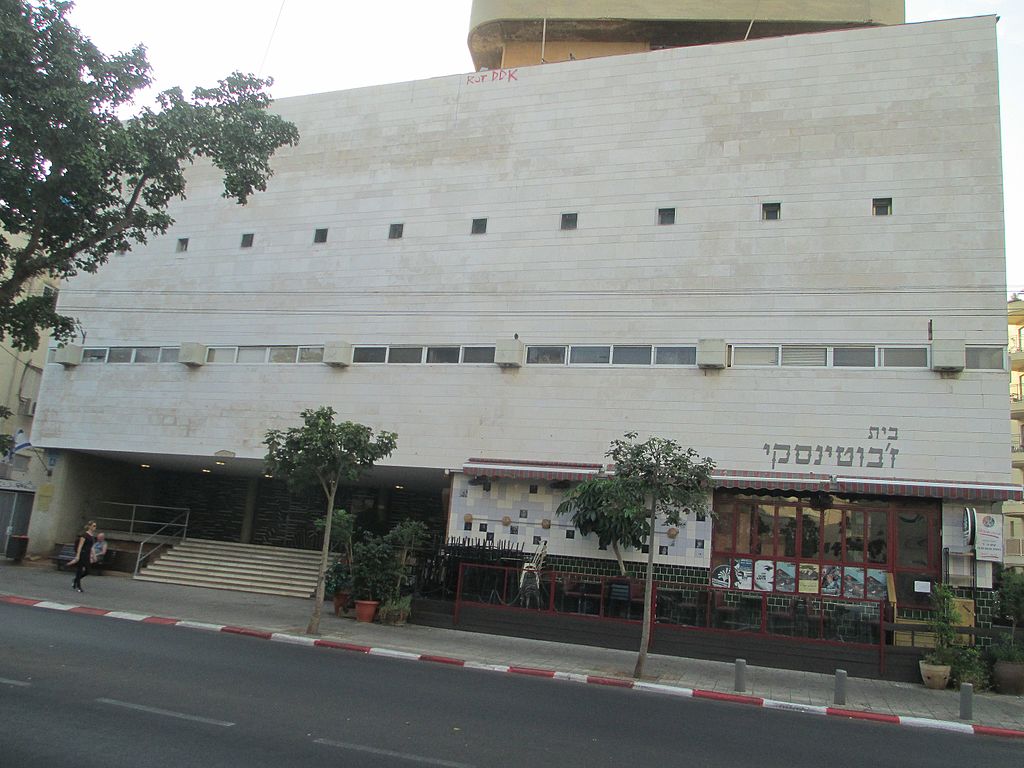 The Jabotinsky House building (Image source: Dr Avishai Teicher CC BY-SA 4.0)
The Jabotinsky House building (Image source: Dr Avishai Teicher CC BY-SA 4.0)
On the top floor is the Jabotinsky Institute where there are two audio-visual presentations highlighting the acts of Ze’ev Jabotinsky, the founder of Etzel, and the story of illegal Jewish immigration to Palestine under the British Mandate.
Learn about the ships that carried Jews from war-torn Europe to the Promised Land thanks to the pre-state Zionist organizations. On the entrance level, the exhibits focus on the history of Etzel, its roots, and the establishment of Beitar (a revolutionist Zionist youth movement) and the operations carried out in that period.
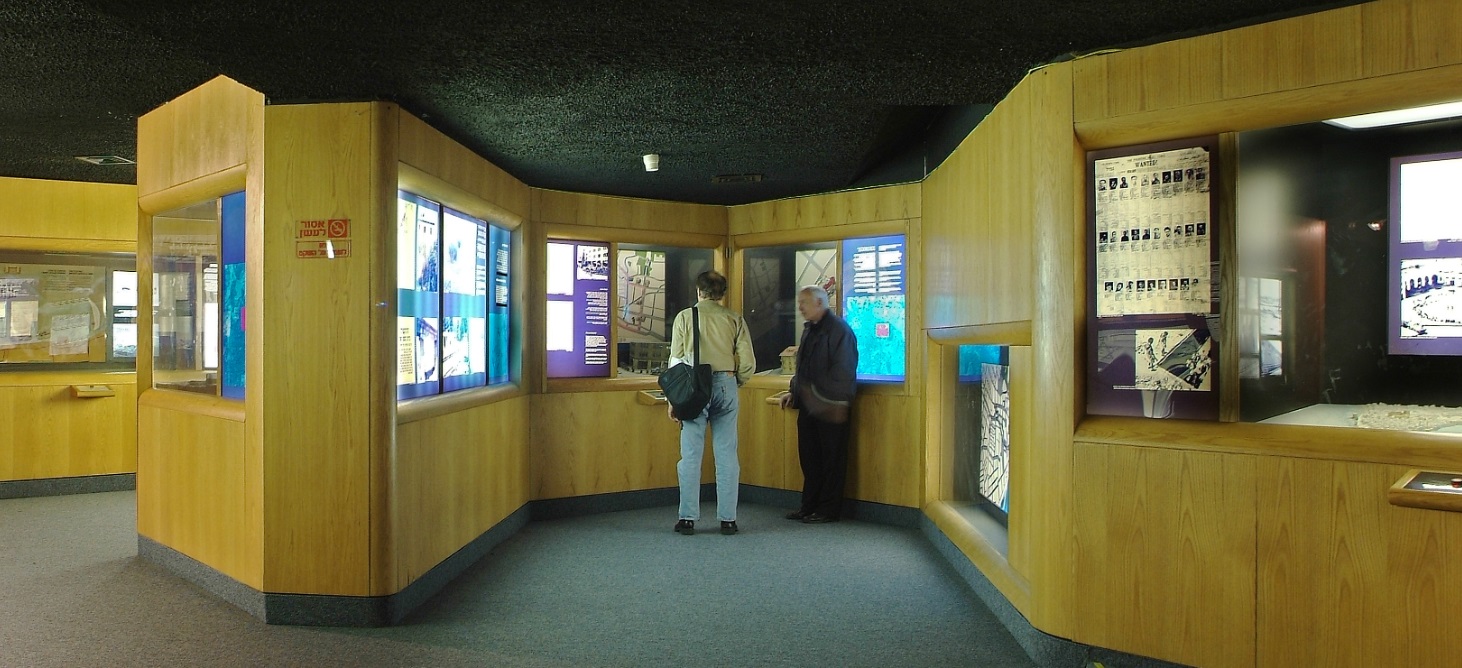 Visitors in the Etzel Museum (Image source: The official Jabotinsky House website)
Visitors in the Etzel Museum (Image source: The official Jabotinsky House website)
Visitors descend to the ground floor to learn about the life of the underground Jewish Zionist organizations and the operations they carried out.
Among these operations was the bombing of the King David Hotel in Jerusalem when it was being used as the British headquarters. Also, the Night of the Aeronauts, when the organization’s fighters attacked the Ramat Gan police station. Learn about the break-in of the Acre prison and the attack on the Ramallah radio station.
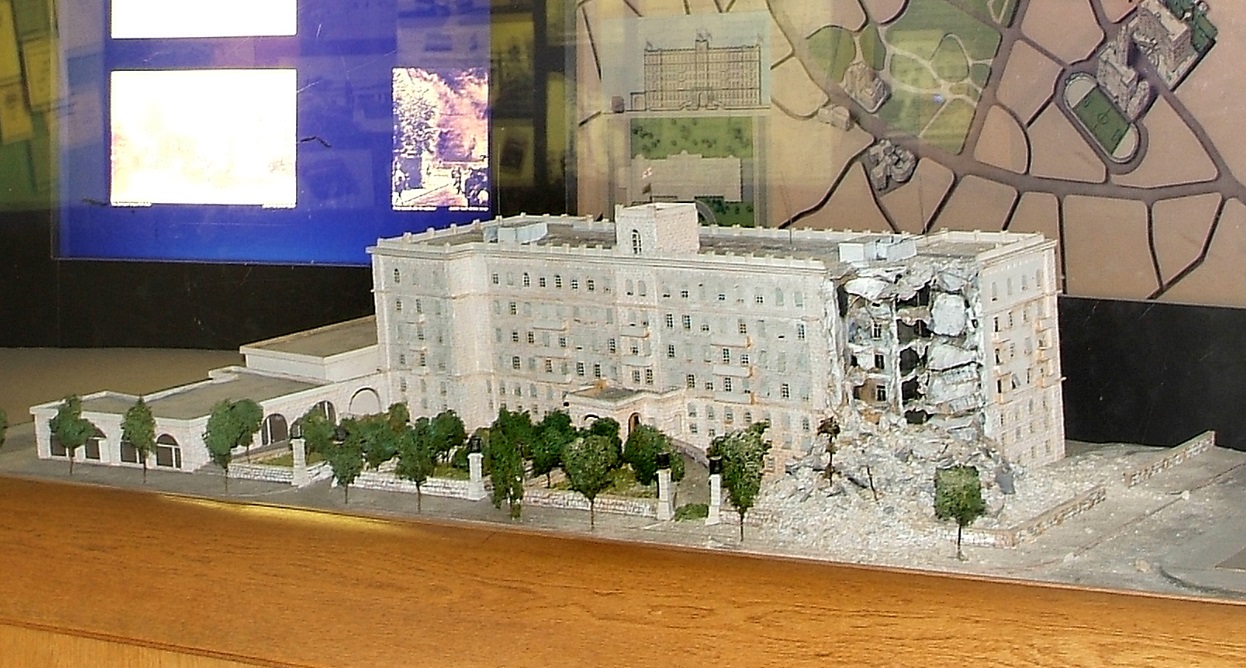 Special operation reconstruction in the Etzel Museum (Image source: The official Jabotinsky House website)
Special operation reconstruction in the Etzel Museum (Image source: The official Jabotinsky House website)
There is a section dedicated to the immigrants and Etzel fighters who lost their lives in the struggle. Among the fascinating exhibits are forged passports used by escapees from a detention camp in Africa, a British army whip, a radio used to broadcast secret messages, and a bomb made to look like a bottle of milk.
Pro Tip: There were several underground Jewish organizations that each played a role in the struggle for the establishment of Israel. Other organizations included Haganah, Palmach, and Lehi as well as Etzel. If pre-state Jewish organizations in Israel interest you then you might like to visit the Palmach Museum or the Haganah Museum.
 Login / Register
Login / Register
 Contact Us
Contact Us
 Certificate of Excellence
Certificate of Excellence Guaranteed Departure
Guaranteed Departure Low Prices Guaranteed
Low Prices Guaranteed 24/7 Support
24/7 Support




